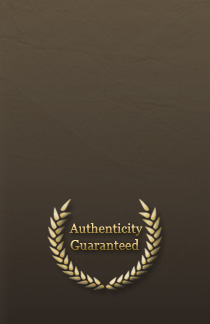A Few Words About Investment "Value"
How does a potential investor determine which carousel figure is the best investment? Obviously, there are no guarantees, but there are a few generally accepted guidelines.
The "value" of a carousel figure is determined by such factors as rarity, ornateness, size, condition, and beauty. Which carving company produced the figure is not considered a determinate of value because virtually all the major carvers produced both very fine work as well as mediocre pieces. As with any antique, it is generally a better investment to purchase one figure of higher quality than two lesser figures. The rate of appreciation is usually higher. Some European carousel figures may rate high in the "beauty department," such as the charming Bayol rabbits; but, with few exceptions, their values have not kept pace with the American carvings. The outside row animals generally bring higher prices because they are larger and more ornately carved. They are also rarer. For every outside row figure, there are at least two smaller inner row animals. Certain horses and menagerie figures were produced or survive in very limited quantity. Examples include armored horses, "signature" pieces with the carver's signature or logo carved into the trappings, greyhounds, donkeys, kangaroos, buffalo, and bears.
"Ornate" describes a number of desirable features, such as intricate or unusual manes; carving on, under, or behind the rear of the saddle (called "cantle carvings"); well executed fur or feather detail on a menagerie figure; lavishly carved trappings which can include jewels, swords, guns, armor, flowers, spears, shields, flowing drapes, flags, and ribbons; and a variety of "side figures" carved on the romance side of the body, such as cherubs, nudes, soldiers or knights, snakes, and dogs.
Although rarely found, the best "condition" is a figure in original or very early paint that is reasonably well preserved, where the wood shows little damage or deterioration. Because of use and abuse by riders and exposure to the weather, carousel animals were usually repaired and repainted every few years, sometimes professionally, but most often by itinerant workers or park personnel. Broken legs were sometimes reattached with metal plates, ears reattached with nails, and other damaged areas crudely repaired or, later, covered with fiberglass. After the overhead jumping mechanism was introduced, the legs on many standing or prancing figures were converted into the more popular jumping pose. For these reasons, it is extremely rare to find a figure in the sought after "original" or near original condition. Thus, a professional restoration can enhance the value of a carousel figure, while a poorly done restoration can detract from it. Some collectors prefer their figures restored to the brighter colors associated with the term "park paint," while others prefer them stripped to the natural wood, and some attempt to reproduce the original factory colors.
Repairs do not necessarily detract from the value--it depends upon the extent of the repairs and how well they have been executed. For example, a stander once converted into a jumper with unattractive chunky legs would have a higher value (and look better) if the legs were professionally restored to their original form, even though the legs would be new. Also, the repair and replacement of broken ears, separated seams, or split hooves will enhance the appearance and the value, as will the removal of peeling or garish paint. On the other hand, added enhancements, such as a new side figure or fancier mane, come close to crossing the line into fakery.
The "beauty" of a carousel figure belongs entirely to the eye of the collector. Some prefer powerful and ornately carved animals, while others prefer the gentle ones. Beauty can be a gracefully arched neck, dramatic pose, a sensitive face, a roaring lion, a dainty inner row jumper, or a draped cherub side figure. It is simply the ability of the carousel figure to "capture the heart" and recreate the wonderful childhood memories of a magical merry-go-round ride.



